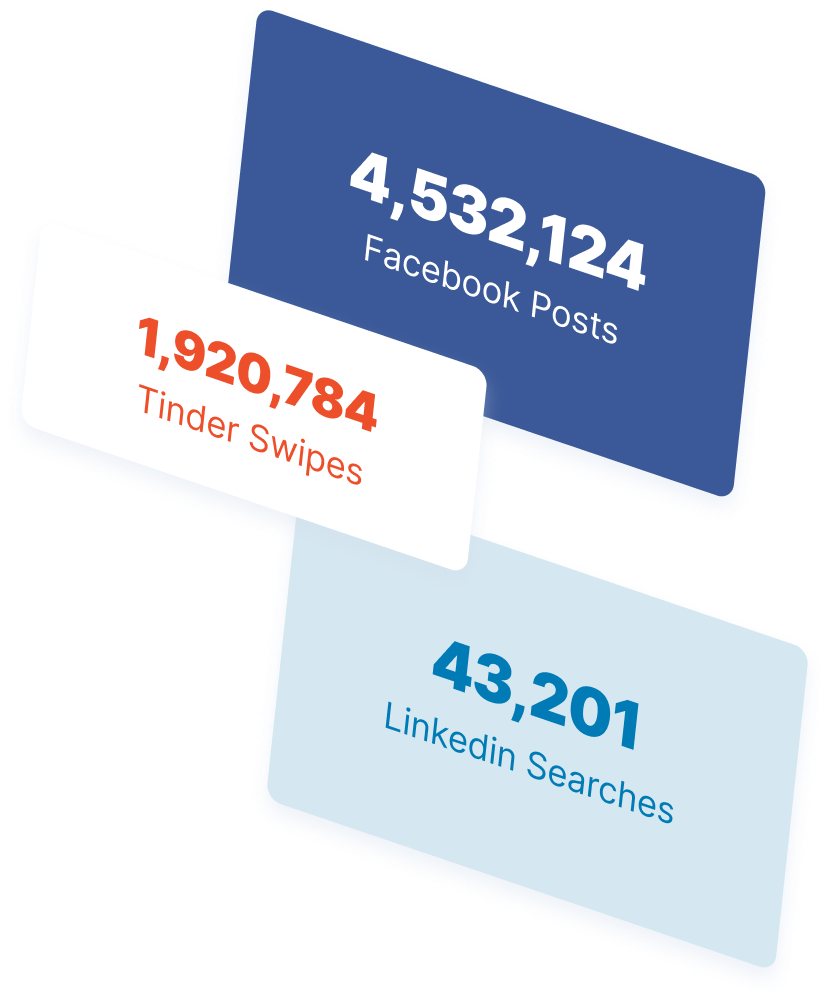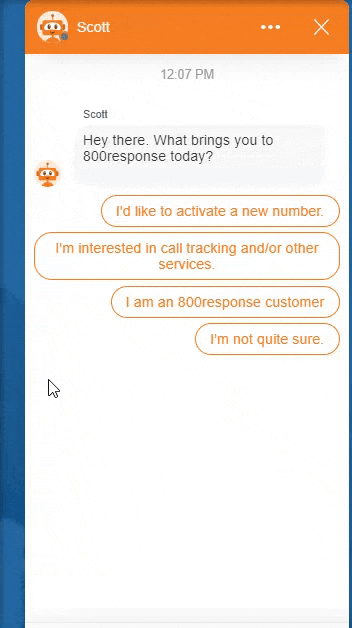-
 7 min. read
7 min. read
-
 Sam Wixted
Sam Wixted Content Writer
Content Writer
- Sam has been writing for WebFX since 2016 and focuses on UX, crafting amazing website experiences, and digital marketing In her free time, she likes to spend time on the beach, play with her cats, and go fishing with her husband.
AI vs Machine Learning vs Deep Learning:
AI, or artificial intelligence, refers to the broader concept of machines mimicking human intelligence, while machine learning is a subset of AI that focuses on algorithms enabling computers to learn from data and improve performance, and deep learning is a specific type of machine learning that uses neural networks to process vast amounts of data and make complex decisions.
If you’re confused by artificial intelligence, machine learning, and deep learning, you’re not alone. Often, these terms get used interchangeably, but they’re not the same thing — though they belong in the same family, they are all different in their own way. To learn more about AI vs. machine learning vs. deep learning, keep reading! We’ll go over the definition of each term and talk about how they fit together as a family. To learn more about using tech in marketing and advertising, try signing up for our newsletter to learn more!
How AI, machine learning, and deep learning fit together
If every term has a different definition, how do they possibly fit together?
The best way to think of AI vs. machine learning vs. deep learning is to think of a target. The outermost ring of the target illustrates artificial intelligence. AI is the overarching term that refers to the way that machines can be as smart as humans — and sometimes even smarter.
Machine learning, then, is the middle ring of the target. It’s a specific kind of artificial intelligence, and it refers to the way that you train computers (machines) to act like humans. The inner-most circle is deep learning, which is a further subset of machine learning.
It can do even more than machine learning and can essentially make decisions without much previous training. It’s best to think of AI vs. machine learning vs. deep learning as different subsets that are a part of the same family — each with its own importance. Next up, let’s define each term.
What is AI?
 AI, or artificial intelligence, is fairly literal. It refers to the way that you can teach machines how to be rational and intelligent like humans.
AI, or artificial intelligence, is fairly literal. It refers to the way that you can teach machines how to be rational and intelligent like humans.
But how does AI work exactly? For a machine or computer to be artificially intelligent, you have to train it with algorithms. That said, you can’t simply tell your computer to become artificially intelligent — it takes time.
When you’re programming a machine or computer to become artificially intelligent, you have to come up with a list of rules and regulations. These guidelines act as your algorithm. In this list of rules, you train your machine what to do if “something” happens.
Providing “if/then” style information to a machine teaches it how to react if a particular situation arises, and the longer it’s exposed to those “if/then” situations, the better it’ll become at solving them.
An algorithm is fundamental to training a computer or machine to be AI-equipped.
Example of AI
A simple example of artificial intelligence at work would be bot marketing via a chatbot on a website or Siri on your smartphone. These applications prove that machines can be trained to act like humans to accomplish a specific task. Keep in mind that artificial intelligence is the biggest, overarching group when talking about machine learning vs. AI vs. deep learning. That means everything classified as machine learning or deep learning is a part of artificial intelligence. MarketingCloudFX is another example of an AI content tool.
This marketing automation suite utilizes artificial intelligence to bring amazing results to businesses marketing and advertising online. It can provide clients’ businesses with data-backed recommendations when it comes to their marketing strategies.
Bonus Read: Artificial Intelligence vs. Human Intelligence
What is machine learning?
So, what is machine learning? Machine learning, as a subset of AI, refers to the way that a computer system can learn based on the provided information. The goal of machine learning is to train a machine to know what to do in a specific situation based on the data provided.
 So, to train a machine with machine learning, you’ll have to provide it with large amounts of data. A computer picks up on patterns and trends in the data you give, which allows it to learn and understand the most likely outcomes. You can think of the data that you provide to the machine as a training manual that you might receive at work or throughout schooling.
So, to train a machine with machine learning, you’ll have to provide it with large amounts of data. A computer picks up on patterns and trends in the data you give, which allows it to learn and understand the most likely outcomes. You can think of the data that you provide to the machine as a training manual that you might receive at work or throughout schooling.
Eventually, after seeing a variety of examples, you’ll pick up on how to perform a task.
Example of machine learning
There’s a conveyer belt at a factory that separates glazed doughnuts from doughnut holes. When operators trained the belt with machine learning, they probably fed it data that looks something like this:
- Left belt: 2-5 oz.
- Right belt: 5-10 oz.
- Left belt: 1 unit
- Left belt: 5+ units
Keep in mind that we don’t run a doughnut shop. We wouldn’t know how to program a doughnut-organizing machine, either, but bear with us for the sake of a machine learning example!
In terms of machine learning, if a doughnut entered the belt that was 12 oz, the machine wouldn’t know what to do since that wasn’t a part of its training. That’s where deep learning comes in.
How about a real-life example of machine learning? ContentAnalyticsFX (which is a part of the MarketingCloudFX family) uses machine learning to help you determine what website content will rank best in search engine results pages.
What is deep learning?
Last but not least, what is deep learning? We know so far that it’s the inner-most circle of the AI family, but how does it work?
Simply put, deep learning is what’s to come after machine learning. It’s a deeper subset of teaching machines with the provided information.  While you must feed a machine data for machine learning to work, deep learning can make conclusions on its own.
While you must feed a machine data for machine learning to work, deep learning can make conclusions on its own.
Example of deep learning
Let’s say you have a cat food feeder that you have trained via machine learning to dispense food when you speak any phrase with the word “feed.” But what if you say “The cats are hungry” instead?
With machine learning, the food dispenser wouldn’t react, but if a user trained the cat food dispenser with deep learning, it’d be able to compute the meaning of your sentence to work the device. PredictionGeniusFX, another MarketingCloudFX family member, uses deep learning to help you predict how content will rank in search results, giving you the best chance of creating a piece of content that takes the number one spot.
Where does big data come in?
If you’ve ever had a conversation about AI, machine learning, and deep learning, the term big data has probably been a part of your discussion. Although big data is part of this family, it’s more of a cousin than a brother.
While AI, machine learning, and deep learning all hit the “target,” big data falls outside the target. If you’re curious about what big data is, it’s exactly what it sounds like. It’s large sets of data that get fed to machines to help them spot patterns and trends so that they can make decisions autonomously, without the help of humans.
Big data gets used most often with machine learning since it requires data sets to find and acknowledge trends — and furthermore, learn from those trends. When you hear the term big data, don’t be discouraged. It’s extremely easy to understand!
Just remember, big data is just that — big sets of data used to train computers and machines.
Learn more about AI, machine learning, and deep learning
If you’re still curious about the inner workings of machine learning vs. deep learning vs. AI, we understand! These terms can be challenging to differentiate, but we’re here to help. WebFX knows AI so much that we’ve developed proprietary marketing software (MarketingCloudFX), which we use to supercharge our clients’ campaigns and their results.
So far, we’ve helped our clients’ businesses earn more than $6 billion in revenue — and that’s only in the past five years. To learn more about MarketingCloudFX and how it can use artificial intelligence to improve your marketing strategy, click the button below!
Be sure to contact us online or give us a call at 888-601-5359 with any questions that you may have about machine learning consulting!
-
 Sam has been writing for WebFX since 2016 and focuses on UX, crafting amazing website experiences, and digital marketing In her free time, she likes to spend time on the beach, play with her cats, and go fishing with her husband.
Sam has been writing for WebFX since 2016 and focuses on UX, crafting amazing website experiences, and digital marketing In her free time, she likes to spend time on the beach, play with her cats, and go fishing with her husband. -

WebFX is a full-service marketing agency with 1,100+ client reviews and a 4.9-star rating on Clutch! Find out how our expert team and revenue-accelerating tech can drive results for you! Learn more
The Internet in Real Time
Ever wonder how much is going on at once on the Internet? It can be tough to wrap your mind around it, but we’ve put together a nice visual that’ll help! The numbers show no sign of slowing down either.
Find out More

Ready to Drive Results for Your Business?
See how WebFX uses SEO, PPC, Social Media, and Web Design to Drive Revenue for Businesses.
Get InspiredThe Internet in Real Time
Ever wonder how much is going on at once on the Internet? It can be tough to wrap your mind around it, but we’ve put together a nice visual that’ll help! The numbers show no sign of slowing down either.
Find out More






